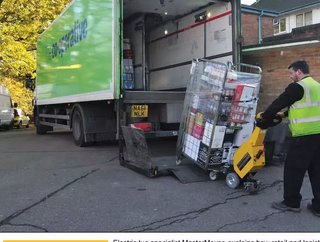Improving efficiency in retail and logistics

Despite tight health and safety regulations to limit the number of accidents in the workplace, over half a million people were reported to have sustained a non-fatal injury at work in 2016. Here, Andy Owen managing director of electric tug specialist MasterMover, explains how retail and logistics companies can avoid common workplace accidents, while also improving efficiency and productivity.
A household goods retailer was recently sued by an employee who was left paralysed after a heavily-laden metal cage fell on them. This type of equipment, according to a survey from the health and safety executive (HSE), accounts for up to a third of work-related injuries reported by businesses.
The high accident rate for cage related injuries is partly down to the vehicles and equipment used by employees to transport heavy and awkward loads, but also from staff trying to prevent roll cages from tipping over.
To reduce the chances of injury, the HSE recommends that businesses rotate their employees across different job roles so that workers do not spend long periods of time moving heavy loads. Loaded cages are difficult to control when moved manually, posing multiple safety issues, particularly when transporting loads over long distances, on uneven surfaces, around obstacles and up slopes. With many retailers struggling to cope with hard-to-predict demand, warehouses often also hold too much stock making distribution centres and warehouses confined spaces to maneuver goods around.
The purpose of roll cages is to make transporting multiple items easier, however, ensuring safe movement around challenging environments is time-consuming and costly to businesses. In 2015, injuries resulting in time off work and compensation claims, cost UK businesses £14.1 billion. By reviewing current practices, businesses can maximise their employee’s productivity without increasing their capital expenditure substantially.
The most cost-effective answer is for companies to invest in pedestrian electric tugs to reliably and efficiently move loads. For example, MasterMover's electric tugs can move loads weighing up to 1,200kg reducing employee strain. Taking the weight off the load, the compact tug can transport multiple cages at one time, allowing more time for employees to complete other duties.
To avoid accidents, business leaders should use the appropriate safety measures for their employees. By taking a smarter approach to moving heavy loads, businesses can substantially minimise the number of accidents in industry.






